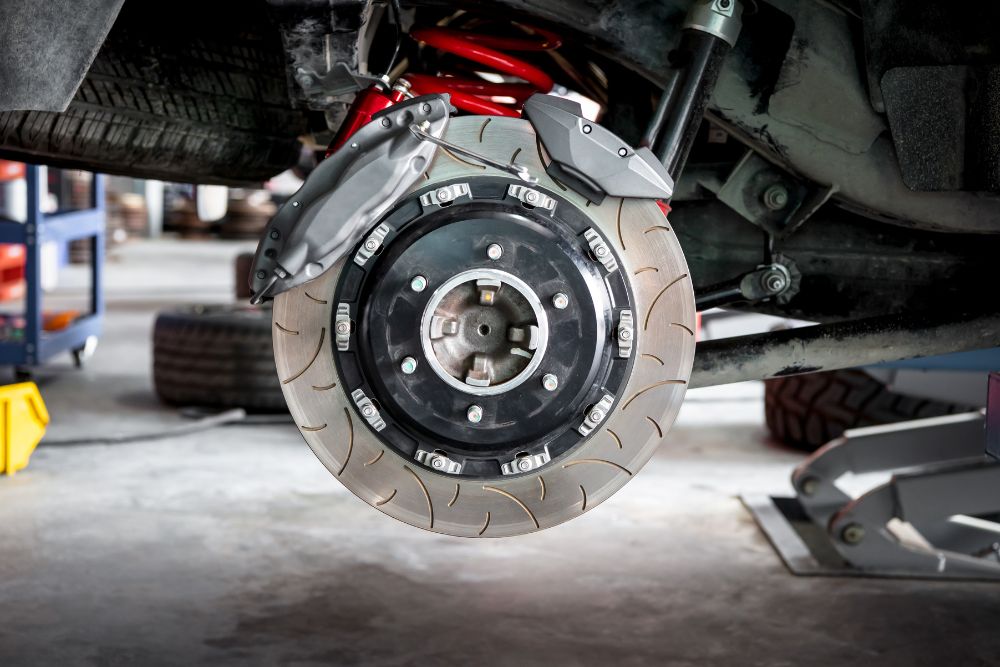
Increasing your car’s power is an exciting journey that many performance enthusiasts embark on, but it requires careful planning and consideration of multiple components to ensure your vehicle remains reliable and balanced. When you’re looking to extract more power from your engine, simply focusing on one component isn’t enough – a comprehensive approach is necessary to maintain safety and longevity.
Essential Upgrades When Increasing Your Car’s Power
Performance Tyre Upgrades
One of the most critical yet often overlooked aspects of increasing your car’s power is upgrading your tyres. Factory tyres are typically designed to balance comfort, noise, fuel efficiency, and grip. When you substantially increase your car’s power output, these standard tyres may not provide adequate traction or handling capabilities.
High-performance tyres offer improved grip through specialised rubber compounds, tread patterns designed for maximum contact patch, and stiffer sidewalls that provide better cornering stability. For Auckland drivers, selecting tyres that perform well in both dry and wet conditions is essential, given our variable weather patterns throughout the year.
Consider increasing tyre width where possible, as wider tyres provide a larger contact patch with the road, allowing you to put more power down effectively. However, this should be done with proper consideration for wheel offset and suspension geometry to avoid rubbing or handling issues.
For vehicles that see track use, dedicated semi-slick tyres can provide dramatic improvements in grip levels, though these often sacrifice wet weather performance and longevity for maximum dry grip. For daily drivers with increased power, high-performance street tyres from manufacturers like Michelin, Pirelli, or Bridgestone offer excellent balance between grip and practicality.
Transmission Reinforcement
The transmission is one of the first components that will feel the strain of increased power output. Standard factory transmissions are designed to handle stock power levels, and when you significantly increase those levels, the transmission can become a weak point. For vehicles with dual clutch transmissions (DCT), such as those found in many modern performance cars, reinforced clutch packs are essential.
Upgrading your transmission might include installing stronger clutch plates, reinforced gear sets, or even a complete transmission rebuild with performance components. Many Auckland performance car owners discover that their transmission begins to slip or show signs of wear after engine modifications, which can lead to expensive repairs if not addressed proactively.
Performance transmission components can handle the additional torque from engine upgrades while maintaining crisp shifting and extending the life of your gearbox. This is particularly important for vehicles that will see track use or aggressive driving conditions.
Cooling System Improvements
Increased power generation inevitably creates more heat, making cooling system upgrades a critical consideration. Stock cooling systems are designed for factory power outputs and may become inadequate when your engine is producing significantly more power.
Upgrading your radiator to a high-flow aluminium unit, installing an oil cooler, and even adding transmission cooling for DCT or automatic gearboxes can prevent overheating issues that might otherwise lead to engine damage or performance limitations. In Auckland’s varying climate conditions, from summer track days to stop-and-go city traffic, proper cooling becomes even more important.
Additionally, consider upgrading your engine’s water pump to a high-flow unit that can move coolant more efficiently through the system. Some performance builds also benefit from additional cooling fans or modified ducting to improve airflow through heat exchangers.
Fuel System Enhancements
Your engine’s fuel system must keep pace with increased power demands. Higher outputs require more fuel, delivered at higher pressures and with greater precision than stock systems can typically provide.
A comprehensive fuel system upgrade might include larger injectors, a higher capacity fuel pump, and reinforced fuel lines. For significantly increased power levels, you might even need to consider a complete fuel system overhaul, possibly including a return-style fuel system for the most demanding applications.
Many modern turbocharged engines become fuel-limited when power increases exceed 20-30% over stock. Ensuring your fuel system can deliver consistent pressure and volume under all conditions is essential for both performance and engine safety.
Braking System Upgrades
While not directly related to power production, upgrading your braking system is a critical safety consideration when increasing your car’s performance. The additional speed capabilities that come with more power demand equivalent stopping power improvements.
Larger diameter rotors, multi-piston calipers, performance brake pads, and high-temperature brake fluid are all worthy investments. For serious performance builds, considering ceramiccomposite rotors or race-specification brake systems might be appropriate, especially if your car will see track use.
Remember that in Auckland’s often wet conditions, brake performance becomes even more critical. A balanced braking system upgrade should consider both dry and wet performance characteristics.
Suspension and Chassis Reinforcement
The increased acceleration, cornering speed, and braking forces that come with power upgrades place additional stress on your car’s suspension components and chassis. Factory suspension bushings, control arms, and even chassis mounting points may not be designed to handle these increased forces.
Upgrading to polyurethane bushings, reinforced control arms, and adding chassis bracing can help maintain proper alignment under hard driving conditions. For serious performance builds, coilover suspension systems offer adjustability that can help manage the additional weight transfer dynamics of a more powerful vehicle.
In Auckland’s varied road conditions, from smooth motorways to winding coastal roads, a balanced suspension upgrade ensures your car can put its new power to the ground effectively and safely.
Differential and Driveline Components
Transferring increased power to the ground requires attention to your car’s differential and driveline components. Limited-slip differentials, stronger axles, and reinforced driveshafts may be necessary depending on your power goals and driving style.
For all-wheel drive vehicles like the Nissan GTR or Mitsubishi Evo, centre differential upgrades can improve power distribution and reduce driveline binding under high loads. Rear-wheel drive cars often benefit from differential cooling additions, especially when used in high-performance driving environments.
Weight Reduction and Aerodynamics
Sometimes the best way to make your car faster isn’t just adding power, but also reducing weight and improving aerodynamics. Carbon fibre components, lightweight wheels, and reduced interior weight can all contribute to better performance without placing additional strain on mechanical components.
Aerodynamic enhancements like front splitters, rear diffusers, and properly designed wings can increase high-speed stability and cornering grip, allowing you to use your increased power more effectively on track or during spirited driving on Auckland’s coastal roads.
Expert Assistance with Performance Upgrades
When considering performance upgrades for your vehicle, working with specialists who understand the intricate balance between various systems is crucial. Piecemeal modifications without considering the entire vehicle as a system often lead to reliability issues, premature component failure, or disappointing performance gains.
As performance car specialists in Auckland, we at Dodson understand the complex interplay between power production and reliable performance. Our experience with high-performance and exotic vehicles allows us to provide guidance that ensures your power upgrades are matched with appropriate supporting modifications.
From Lamborghinis and McLarens to Nissan GTRs and BMW M cars, we’ve helped countless Auckland performance enthusiasts achieve their power goals while maintaining reliability and drivability. Our comprehensive approach to vehicle performance ensures that no aspect of your car’s systems is overlooked when increasing power outputs.
Need help planning or implementing your car’s power upgrades? Contact our team today by calling 09 441 3635 or emailing service@dodsonmotorsport.com to discuss how we can help make your performance goals a reality while ensuring your vehicle remains reliable and balanced.

 Looking for Dual Clutch transmission components outside of New Zealand?
Looking for Dual Clutch transmission components outside of New Zealand?